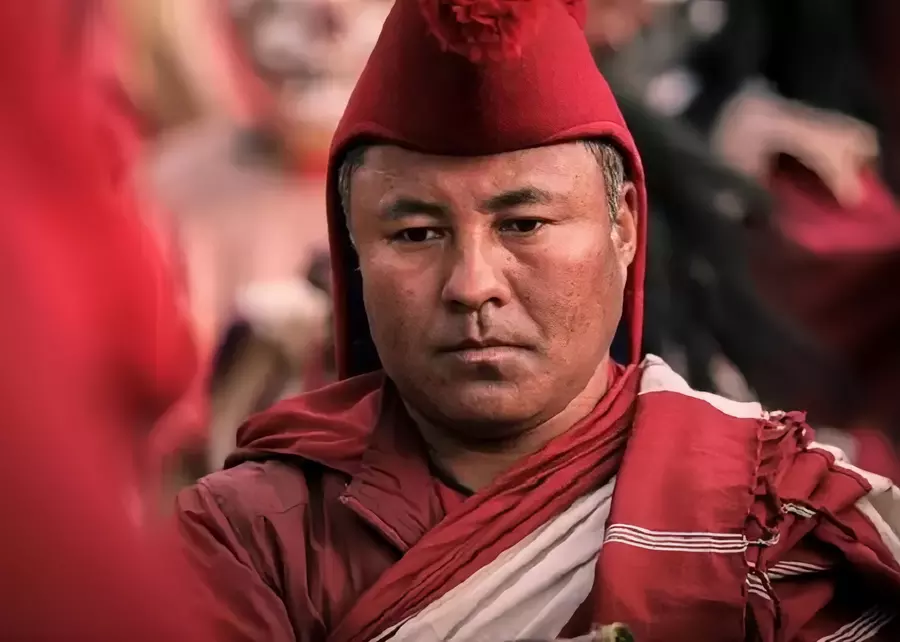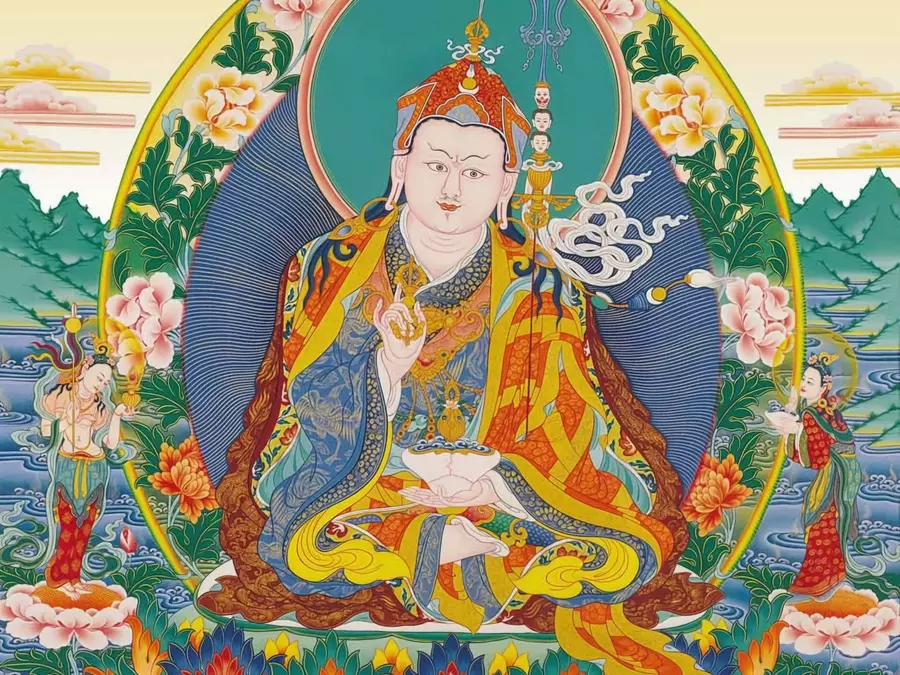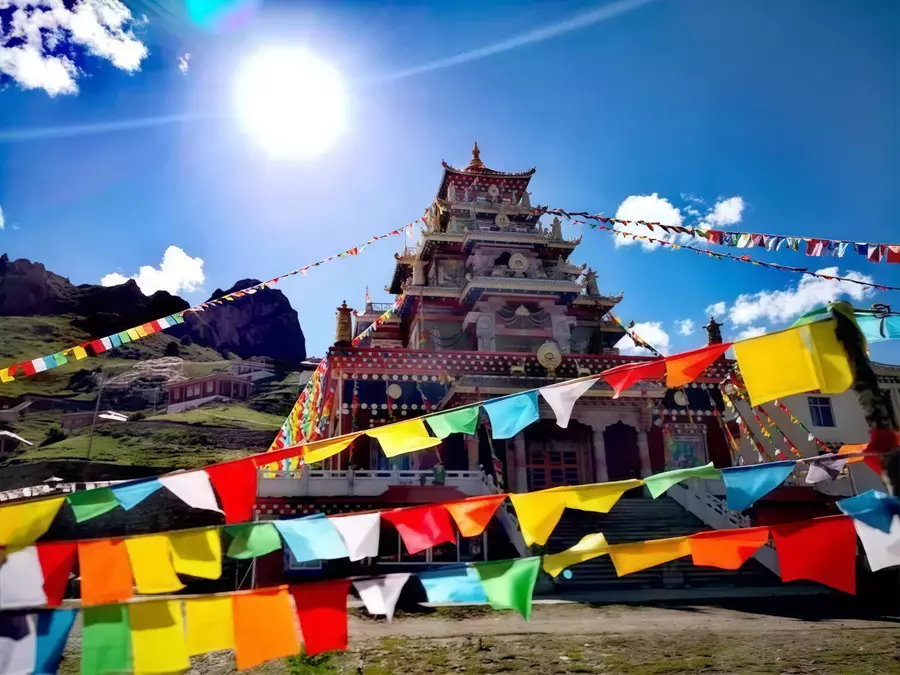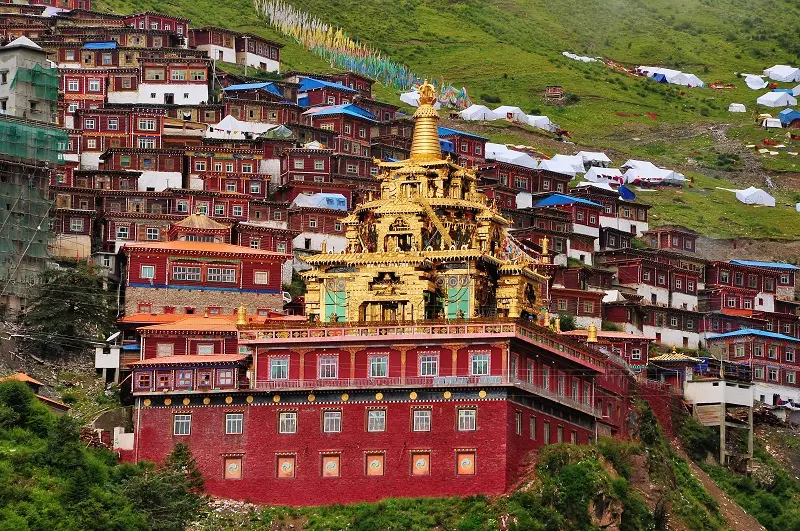The Nyingma School of Tibetan Buddhism
- by Emily
- Last Updated: 2024-08-20
The Nyingma is the oldest and second largest school of the four major schools of Tibetan Buddhism, founded by Guru Padmasambhava in the 11th century. The monks and nuns of this school wear red monk hats, so it is also called the red sect. Nyingma(རྙིང་མ) means "ancient" and "old" in Tibetan. The term "Nying" refers to its lineage, which dates back to the 8th century, predating other schools that emerged later. The term "ma" refers to its teachings, which have been passed down from Padmasambhava, Vimalamitra, and other masters of that era. Initially, the Nyingma had no monasteries, was loosely organized, and lacked a systematic doctrine and a completely monastic system. Over time, it developed through the compilation of scriptures, the establishment of monasteries, and collective activities.

The Nyingma School focuses on tantric practices, particularly Dzogchen (the Great Perfection). It emphasizes natural and internal spiritual practices over external rituals. Compared to other sects, Nyingma places more importance on yoga practices and meditation, advocating for integrating Buddhist teachings into daily life.
Formation and Development
In the 8th century, Padmasambhava translated and introduced esoteric teachings to Tibet, merging them with the local Bon religion, forming the Dzogchen. He is revered as the founder and a second Buddha within the Nyingma Sect.
In the development of the Nyingma School, three individuals must be mentioned: Zurchen Shakya Jungne(1002-1062), Zurchung Sherab Drakpa (1014-1074), and Zur Shakya Sengge (1074-1134). These three, being grandfather, father, and son from the Zur family, are collectively referred to as the "Three Zurs" by later generations. Strictly speaking, the Nyingma was formed as a structured sect when the Three Zurs established monasteries in the 11th century with significant activities.
Zurchen Shakya Jungne was the first to systematically organize the Nyingma scriptures at that time. In his early life, Zurchen studied the old tantras under many eminent monks. After receiving the lineage, he summarized and compiled the teachings of the old tantras, and divided them into root and expository tantras. Nyingma teachings are divided into the two categories of Kama (spoken word), and Terma (revealed scripture). Thereby he established the classical system of the Nyingma Sect. Zurchen also founded Upalung Monastery, creating a religious activity center for the Nyingma. It was from Zurchen’s efforts that the previously scattered organization of the Nyingma began to take shape as a cohesive sect.
Zurchung Sherab Drakpa, Zurchen’s nephew and adopted son, practiced alone for 13 years, attaining the realization of "Great Perfection." He had many disciples, and there is a saying that "four pillars, eight beams, and thirty-two cover short pillars," indicating his critical role in the expansion and development of the Nyingmapa.
Zur Shakya Sengge, the son of Zurchung Sherab Drakpa, was also a famous figure in the history of the Nyingma. He not only gathered many disciples but also built monasteries in the Dzogchen area. Historical records indicate that he had thousands of disciples, and for over 400 years after his time, the transmission of Nyingmapa centered around his lineage.

Afterward, there was a remarkable development in the Nyingma sect. The disciples of the Three Zurs spread out to various regions to promote tantric teachings and built small-scale monasteries as places for religious instruction. In the 13th century, the Nyingmapa gained the support of the Sakya local government and gradually received recognition from other sects. By the 14th century, it had already spread to Bhutan and Nepal. It was not until the 16th and 17th centuries that larger monasteries were established, and later, the Nyingma school developed under the support of the Fifth Dalai Lama. In modern times, Nyingma monasteries have been established in various countries such as India, Belgium, Greece, France, and the United States, and numerous works on its teachings continue to be published.
Outstanding Features
Among the various sects of Tibetan Buddhism, the Nyingma is quite unique. It is the oldest sect and has the strongest influence from Bon. It inherits the ancient tantric teachings from the Tubo period, and many of its doctrines are similar to those of Bon. For example, Nyingma monasteries enshrine statues of Mamo Bötong, Jikten Chötö, and Möpa Drakngak which are derived from Bon.
Transmission
The organization of the Nyingma sect is relatively loose, with dispersed followers who often pass down teachings through familial and master-disciple relationships. Its transmission is divided into two main parts: the textual transmission and the terma (hidden treasure) transmission. After the 14th century, the classical textual transmission gradually gave way to the terma transmission. Terma is tantric teachings hidden by high tantric masters like Padmasambhava during the early dissemination period and later discovered and promoted. Although all sects of Tibetan Buddhism have terma, the Nyingma sect places the greatest emphasis on it, with divisions into southern and northern termas. The Great Perfection (Dzogchen) is a unique terma of the Nyingma sect. It leads to the attainment of the Rainbow Body and Rainbow Light Body. The former represents the accomplishment of a Bodhisattva of the Ten Stages, while the latter are higher achievements beyond the tenth bhumi of a Bodhisattva.

Therefore, unlike other major sects such as the Sakya, Kagyu and Gelug, the Nyingma sect did not start with a central monastery and combined with local forces to form a stable monastery group from the beginning. It did not align itself with local powers to form a stable monastic system until 1598 when the Nyingma sect built its first major monastery in Tibet - Dorje Drak Monastery, which is also referred to as the ancestral temple of the Nyingma sect.
Teachings
Nyingma monks focus on tantric teachings but place less emphasis on exoteric (sutric) teachings. The followers are mainly divided into two categories: Ngakpas(with scriptures) and Abbotst(mantra reciters). Ngakpas form the main body of the Nyingma tradition, with teachings passed down from master to disciple or from father to son. Abbots are similar to Bon believers. who chant scriptures and mantras in their societal roles, without focusing on studying Buddhist scriptures or theories, leading to their being looked down upon by other sects. It was not recognized by other sects at the beginning, and in their view, the Nyingma scriptures lacked authenticity and were either fabricated or faked. This view changed in the 13th century when Sakya Pandita found the Sanskrit original of Vajrakilaya transmitted by Padmasambhava in an ancient temple in the Yarlung Valley, leading to the recognition of Nyingmapa as a legitimate sect of Tibetan Buddhism.
Famous Monasteries of Nyingmapa
The six mother monasteries of the Nyingma sect are Dorje Drak, Mindrolling, Kathok, Dzogchen, Palyul, and Shechen Monastery. Among them, Kathok is the earliest monastery of the Nyingma School, Dorje Drak Monastery and Mindrolling Monastery are located in Lhasa. If you are interested in the Nyingma, you can visit these monasteries during your travels in Tibet.
Kathok Monastery
Kathok Monastery is located on the eastern flanks of a mountain range in Baiyu County, Garzê, Sichuan., at an altitude of 4800 meters, just across a mountain from Tibet. The monastery’s name comes from a large smooth white stone, naturally inscribed with a Tibetan letter pronounced as "Ka". Guru Padmasambhava personally consecrated Kathok Monastery thirteen times. Kathok is the most famous of the Nyingma lineage's three streams and six great Vajra sites. It is considered the mother monastery of the Red sect. Over the past 800 years, over 100,000 practitioners have achieved the rainbow body in this sacred place. Today, Kathok lineage masters are spread across Asia, Europe, and North America.

Dorje Drak Monastery
Dorje Drak Monastery is the largest Nyingma monastery in Tibet, known as the ancestral temple of the Nyingma sect. Located in Chênggo Township, Gonggar County, the monastery's name comes from the natural vajra image on the back hill. Originally, Rigdzin (Godemchen) founded Dorje Drak Monastery in 1598. Built on a hillside facing the Yarlung Tsangpo River, the steep and majestic terrain enhances the grandeur of the monastery. There is 82.1 kilometers from Lhasa to Dorje Drak Monastery and it takes about 1 hour and 30 minutes.
Mindrolling Monastery
Mindrolling Monastery is one of the three great Nyingma monasteries in Tibet, located in Zhanang County, Shannan Prefecture, Tibet. A terma(treasure-revealer) master, Rigzin Terdak Lingpa, founded it in 1676. Nestled in a valley surrounded by mountains with an open valley at its front, Mindrolling has an excellent location. The monastery mainly teaches the Southern Terma along with the Buddhist scriptures passed down since the time of the Three Zurs. Mindrolling Monastery is about 122 kilometers from Lhasa, approximately a 2-hour drive. It’s convenient to visit both Mindrolling and Dorje Drak Monasteries on a single trip.
Conclusion
As the oldest and second-largest school of Tibetan Buddhism, the Nyingma sect emphasizes esoteric practices and spiritual cultivation, guiding people to inner peace and liberation for true freedom and happiness.
Related Articles
- Chokhor Duchen Festival
- Palden Lhamo
- Labrang Monastery
- Gang-Gyan Lhasa Hotel
- Drepung Monastery
- Tibetan Buddhism
- Pelkor Chode Monastery
- Tashi Dor Monastery
- Tsurphu Monastery
- Nalendra Monastery
Email response within 0.5~24 hours.


